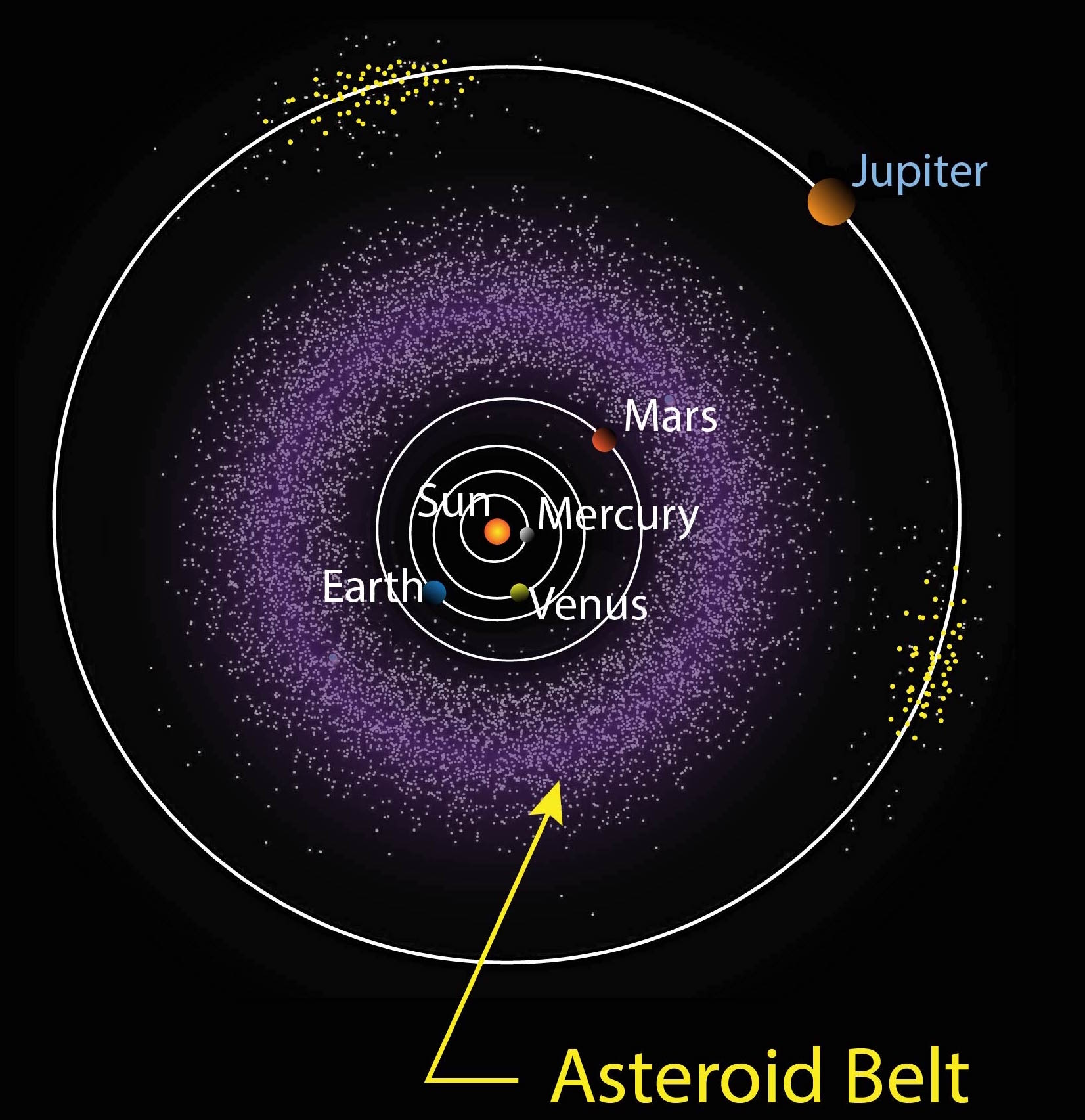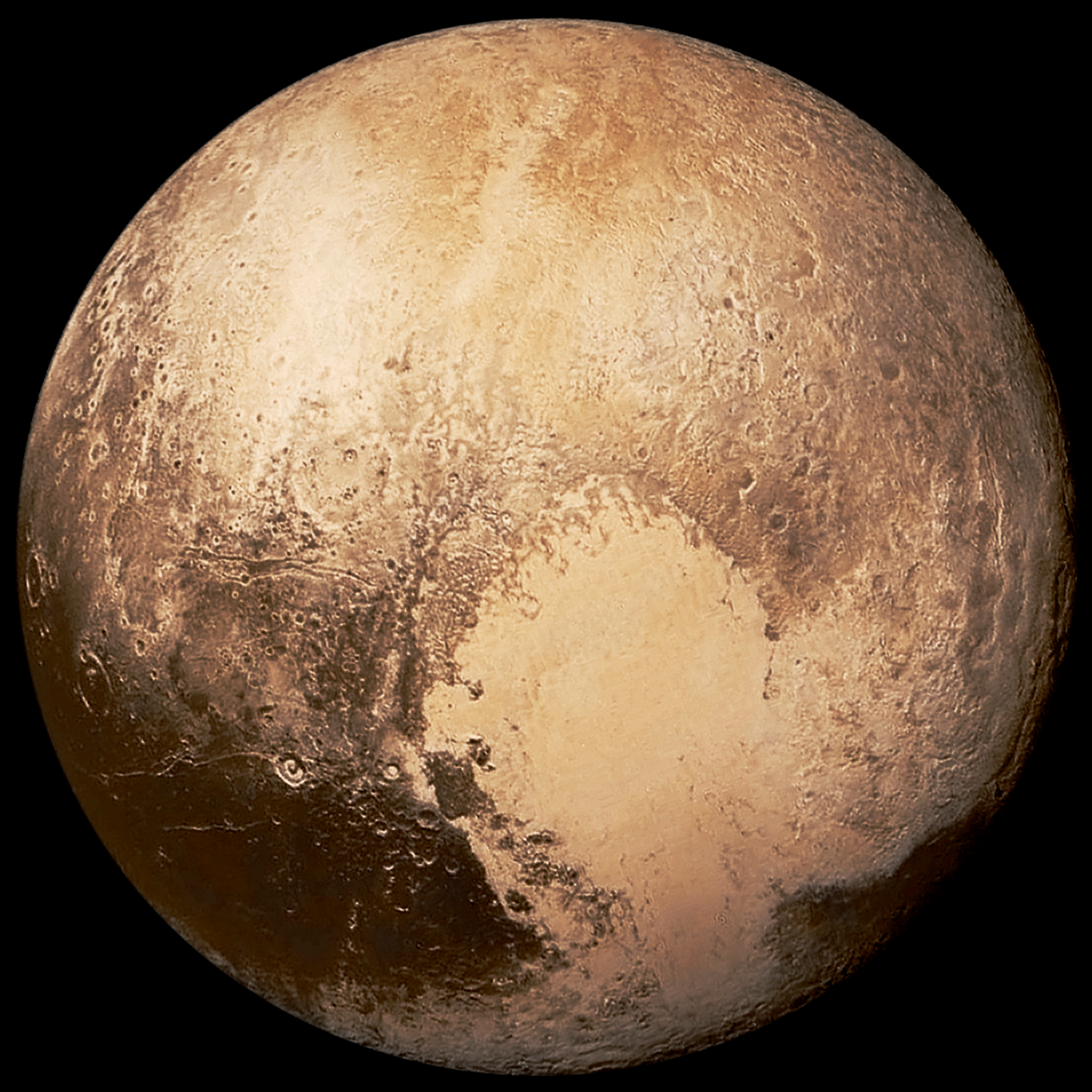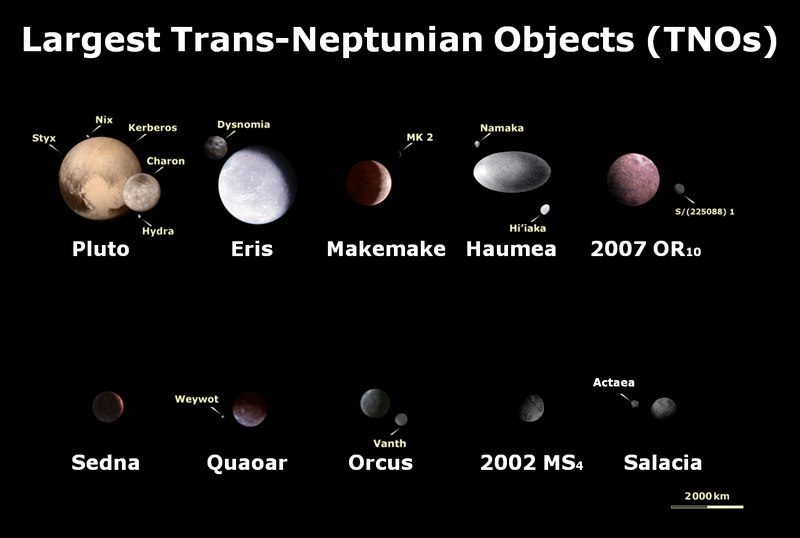The Outer Solar System
In our last blog, Solar System Part 1, we looked at the Inner Planets out to Mars.
We’ll complete our tour by looking at the Outer Planets and small members of our Solar System.
Let’s start beyond Mars with the asteroids.
Asteroids
The asteroid belt lies between Mars and Jupiter.
They are between 2 AU and 4 AU from the Sun.

Asteroid Belt: NASA
Asteroids are small rocky and metal objects.
Rocky asteroids are made of silicate and clay.
Metal asteroids are made of iron and nickel.

Asteroid Ida and moon Dactyl. NASA / Galileo
They range in size from less than a kilometre up to hundreds of kilometres.
The belt holds one million known asteroids.
That’s a lot but added together they would only make an object 3% the size of our Moon.
Asteroids are irregular in shape with one exception.
Ceres, the largest asteroid, is spherical.

Ceres: NASA / JPL-Caltech / UCLA / MPS / DLR / IDA / Justin Cowart
At 952 km across, Ceres is the largest asteroid and has now been classified as a dwarf planet.
Now we’ll move out to the gas giant planets.
Jupiter

Planet Jupiter: NASA
Diameter: 143,000 km
Distance from Sun: 5.2 AU
Year: 11.9 Earth years
Day: 9 hours 55 minutes
Jupiter is the largest planet, a gas giant.
It is made of hydrogen and helium topped by clouds.
It’s clouds are spun into stripes by its fast rotation.
The white clouds contain methane and ammonia, the red clouds contain sulphur compounds.
The great red spot is a storm which has blown for hundreds of years.
Jupiter has 95 moons.
Saturn

Planet Saturn: NASA
Diameter: 120,000 km
Distance from Sun: 9.6 AU
Year: 29.5 Earth years
Day: 10 hours 39 minutes
Saturn is the second biggest planet, a gas giant like Jupiter.
The yellow colour of Saturn comes from a mist of ammonia ice at the surface.
Saturn’s magnificent rings are made of millions of chunks of ice.
The rings are 270,000 km across but less than one kilometere deep.
Saturn has 146 moons.
Uranus

Uranus: NASA
Diameter: 51,000 km
Distance from Sun: 19.2 AU
Year: 84 Earth years
Day: 17 hours 14 minutes
An outer layer of methane gives Uranus its blue colour.
It has thin dusty rings which show the planet is on its side.
Perhaps a collision with another planet knocked it over billions of years ago.
Uranus has 28 moons.
Neptune

Neptune: NASA
Diameter: 49,500 km
Distance from Sun: 30 AU
Year: 165 Earth years
Day: 16 hours
Neptune is the smallest of the gas giants.
Like Uranus it looks blue because of methane gas.
Storms see winds reaching over 2,000 km / hour.
Neptune has 16 moons.
Smaller than planets
As well as asteroids, the Solar System contains other smaller objects.
We’ll look at dwarf planets and comets.
Dwarf Planets
Dwarf planets are so called because they are small – smaller than our Moon.
They have eccentric, oval-shaped orbits unlike the eight regular planets.
Dwarf Planets are also known as Trans-Neptunian Objects (TNOs) because they are further from the Sun than Neptune.
They lie in a region beyond the regular planets called the Kuiper Belt.
This region is 30 to 55 AU from the Sun.
The best known dwarf planet is Pluto.
Pluto

Pluto: NASA / New Horizons
Diameter: 2,372 km
Distance from Sun: 39 AU
Year: 248 Earth years
Day: 6.4 Earth days
Pluto is the largest of the dwarf planets.
It is covered in ice with a surface temperature of minus 230C.
Pluto’s eccentric orbit sometimes carries it closer to the Sun than Neptune.
This oval orbit, together with its size, lead to Pluto being reclassified as a Dwarf Planet.
Pluto has 5 moons, the largest of which is Charon.
Other Dwarf Planets
Most dwarf planets are found in the Kuiper Belt, some 40 AU from the Sun.
They are named for gods of different countries.
Among them are Eris, Haumea, Makemake, Quaoar, Sedna, Gonggong, Orcus and Salacia.

Dwarf Planets, TNOs: Wikipedia
Comets
Comets are found in the outer regions of the Solar System.
The Oort Cloud of comets lies far from the Sun, from 5,000 AU to 100,000 AU.
Inside that is the doughnut-shaped Kuiper Belt, home to more comets and the dwarf planets.
Comets are space icebergs, made of water ice and ices of methane and nitrogen.
In the ice are small rocks and dust covers the surface.
Comet 67P/C-G: ESA / Rosetta
There are millions of comets in the Oort Cloud.
Most are just a few kilometres across.
Occasionally, comets are dislodged from their distant orbits.
When they come close to the Sun, a remarkable change occurs.

Comet Hale-Bopp, 1997
The ices sublime, turning from solid to gas.
The Sun blows the gas into space as a comet tail.
Dust blown from the comet surface makes a separate dust tail.
The most famous comet is Halley’s Comet.
I saw it in 1986. It will return to our skies in 2061.
I hope that you see it then!
The real Solar System

The Solar System is much larger than most people realise.
It’s edge is the Oort Cloud of comets, half way to the nearest star.
The doughnut shaped region, the Kuiper Belt, lies inside the cloud.
It is home to dwarf planets and more comets.
It is only at the centre we find the Sun and eight main planets.
Solar System in Wonderdome
Wonderdome planetarium can take you into space in your own school!
Our expert presenters will take you on a tour of the planets.
To see how to book a Wonderdome visit, please go to our home page.

The author: Dennis Ashton is a Fellow of the Royal Astronomical Society and a Wonderdome presenter.
Would you like to hear more Astronomy news?
Do you want to to find out about our upcoming public events?
Follow WonderDome Portable Planetarium on Twitter and Facebook or go to our web site wonderdome.co.uk

